Diverses expériences au CERN
CERN is home to a wide range of experiments. Scientists from institutes all over the world form experimental collaborations to carry out a diverse research programme, ensuring that CERN covers a wealth of topics in physics, from kaons to cosmic rays, and from the Standard Model to supersymmetry.
The largest collaborations run experiments using the Large Hadron Collider (LHC), the most powerful accelerator in the world. In addition, fixed-target experiments, antimatter experiments and experimental facilities make use of the LHC injector chain.
Les expériences LHC
Eight experiments at the Large Hadron Collider (LHC) use detectors to analyse the myriad of particles produced by collisions in the accelerator. These experiments are run by collaborations of scientists from institutes all over the world. Each experiment is distinct, and characterised by its detectors.

The biggest of these experiments, ATLAS and CMS, use general-purpose detectors to investigate the largest range of physics possible. Having two independently designed detectors is vital for cross-confirmation of any new discoveries made. ALICE and LHCb have detectors specialised for focussing on specific phenomena. These four detectors sit underground in huge caverns on the LHC ring.
The smallest experiments on the LHC are TOTEM and LHCf, which focus on "forward particles" – protons or heavy ions that brush past each other rather than meeting head on when the beams collide. TOTEM uses detectors positioned on either side of the CMS interaction point, while LHCf is made up of two detectors which sit along the LHC beamline, at 140 metres either side of the ATLAS collision point. MoEDAL uses detectors deployed near LHCb to search for a hypothetical particle called the magnetic monopole. FASER, the newest LHC experiment, is situated 480 metres from the ATLAS collision point in order to search for light new particles and study neutrinos.
Les expériences avec cibles fixes
Dans les expériences avec cibles fixes, un faisceau de particules accélérées est dirigé sur une cible solide, liquide ou gazeuse, qui peut faire partie intégrante du système de détection.
COMPASS, qui étudie la structure des hadrons (des particules constituées de quarks) utilise des faisceaux du Supersynchrotron à protons (SPS).
Le SPS alimente également la zone Nord, qui abrite un certain nombre d'expériences. NA61/SHINE étudie une transition de phase entre les hadrons et le plasma de quarks et de gluons, et effectue des mesures pour des expériences étudiant les rayons cosmiques et les oscillations neutrinos longue distance. NA62 utilise des protons du SPS pour analyser des modes rares de désintégration des kaons. NA63 dirige des faisceaux d'électrons et de positons sur diverses cibles afin d'étudier les processus de rayonnement dans les champs électromagnétiques forts. NA64 recherche de nouvelles particules qui serviraient de médiateurs pour une interaction inconnue entre la matière visible et la matière noire. NA65 étudie la production de neutrinos tau. UA9 étudie comment les cristaux pourraient aider à diriger les faisceaux de particules dans les collisions à haute énergie.
L’expérience CLOUD utilise les faisceaux du Synchrotron à protons (PS) pour étudier un lien possible entre les rayons cosmiques et la formation des nuages. DIRAC, qui analyse actuellement les données, explore les interactions fortes entre les quarks.
Les expériences sur l'antimatière
Currently the Antiproton Decelerator and ELENA serve several experiments that are studying antimatter and its properties: AEGIS, ALPHA, ASACUSA, BASE and GBAR. Whereas ATRAP and ACE have now completed their experiments.
Les installations pour les expériences
Experimental facilities at CERN include the Radioactive Ion Beam facility (ISOLDE), MEDICIS, the neutron time-of-flight facility (n_TOF) and the CERN Neutrino Platform.
Les expériences passées
Des centaines d’expériences menées sur plusieurs décennies ont fait partie du programme d’expérimentation du CERN.
Parmi elles figuraient des expériences pionnières de la physique électrofaible, une branche de la physique qui unifie deux des quatre forces fondamentales, à savoir la force faible et la force électromagnétique. En 1958, une expérience auprès du Synchrocyclotron découvre une désintégration rare du pion, qui permettra de faire connaître le CERN dans le monde entier. Par la suite, en 1973, la chambre à bulles Gargamelle présente le premier signe direct de l’existence du courant neutre faible. Dix ans plus tard, les scientifiques du CERN qui travaillent alors sur les détecteurs UA1 et UA2 annoncent la découverte du boson W (en janvier 1983) puis du boson Z (en juin 1983) – les deux porteurs de la force électrofaible. Les deux scientifiques qui ont joué un rôle clé dans ces travaux, Carlo Rubbia et Simon van der Meer, recevront le prix Nobel de physique en 1984.
À partir de 1989, le Grand collisionneur électron-positon (LEP) permettra aux expériences ALEPH, DELPHI, L3 et OPAL d’établir sur des bases expérimentales solides le Modèle standard de la physique des particules. Le LEP cessera d’être exploité en 2000 pour permettre la construction dans le même tunnel du Grand collisionneur de hadrons (LHC).
Les contributions majeures du CERN à la physique électrofaible ne sont que quelques-uns des résultats marquants obtenus par les expériences au fil des années.

